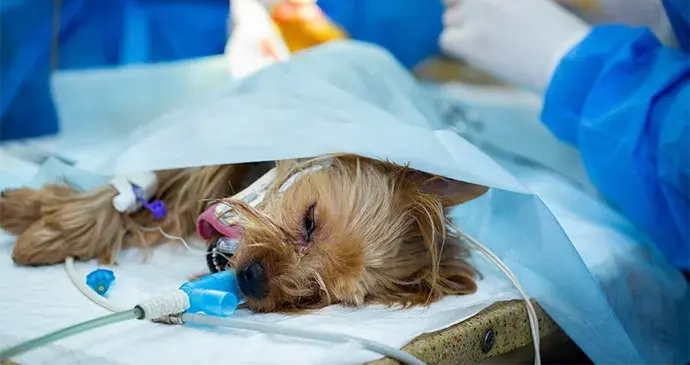It's 8:30 am on a fully-booked Monday. Your first surgical patient is prepped, and suddenly the infusion pump starts alarming, then turns off. No error code, no warning - just dead. Your team scrambles to find a solution while the schedule starts backing up.
They go back to a manual process, maybe, they haven’t used in years.
Equipment failures happen and they're frustrating.
But what many practice owners and managers don't fully catalog is just how expensive these failures really are, beyond the repair bill. The repair or replacement cost? That's just the start.
This is especially true for fluid delivery systems like syringe pumps and infusion pumps, which are used constantly and play a critical role in patient care. When they fail, the effects ripple through your entire practice in ways you might not have measured.
How one failing pump derails an entire day
When a critical piece of equipment fails, it doesn't just impact one patient or procedure. It snowballs across multiple layers of your practice.
Immediate procedure delays or cancellations.
Scheduling chaos as staff try to rearrange appointments.
Treatment protocols that have to be modified.
Additional monitoring requirements for patients receiving manual fluid administration.
Staff pulled from their normal duties to troubleshoot or implement workarounds.
A single failing infusion pump can turn a well-organized day into a stressful scramble, affecting every aspect of your practice's operation. One equipment failure forces your team to spend their day reacting rather than providing the care they're trained to deliver.
In our 2025 vet industry survey, we asked practice managers and owners if equipment malfunctions impact clinic reputation and client satisfaction. 87% either agree or strongly agree.
“Any equipment failure sets us back and can reflect poorly on the clinic and our overall service. Even if the problem is minor, it can force us to shuffle schedules and occasionally reschedule procedures entirely. That obviously impacts satisfaction,” says Marcus, a companion animal practice owner in Maryland.
There’s a way to quantify the financial impacts you might be missing
When we talk about the cost of equipment failure, most practices think about the invoice for repairs or replacement. But the financial impact goes far deeper. Let's break down some of these hidden costs:
- Implement stressful, time-consuming workarounds.
- Deal with frustrated clients whose appointments are delayed or rescheduled.
- Worry about patient safety when precise fluid delivery isn't possible.
- Feel helpless and unable to provide the level of care they're trained for.
These frustrations contribute to burnout and staff turnover, which are already critical issues in veterinary medicine. When equipment failures become recurring problems, they signal to staff that the practice doesn't prioritize giving them the tools they need to succeed. It erodes morale and can push valued team members to look elsewhere.
The cost of replacing just one veterinary technician costs around $59,000 when accounting for recruitment, training, and initial productivity losses according to a study in the journal Frontiers in Veterinary Science.
Reliable equipment creates a supportive work environment where your team can thrive and stay with you.
When pumps fail, patients pay. Equipment downtime impacts safety
Beyond financial and operational impacts, equipment failures directly affect patient care and safety. This is particularly true for fluid delivery systems, where precision matters tremendously.
When an infusion pump fails…
Critical medications may not be delivered at the intended rate.
Manual drip sets provide less precise control, especially for small doses or sensitive patients.
Staff attention is divided between normal duties and extra monitoring requirements
Treatment protocols may be compromised or delayed.
For critical patients, these differences can significantly impact outcomes. A syringe pump delivering medications precisely can make the difference between successful treatment and complications. Equipment reliability is an essential component of patient safety.

Equipment failures damage client relationships
Clients may not know that an equipment failure caused their appointment delay or rescheduling, but they certainly feel the effects. Each negative experience chips away at the trust you've worked hard to build.
Longer wait times are frustrating. Everyone wants to feel like they get served when they want, and that they’re the priority. Rescheduled appointments become a hassle for your clients. It delays necessary care, but it’s also a mental burden on them. Rescheduling creates perceptions of disorganization, which undermines confidence in your practice. And if it happens more than once, clients will migrate to your competitors.
It’s a competitive business and families aren’t starved for choices. Reliability matters. Studies show it costs significantly more to acquire a new client than retain an existing one. Equipment failures that affect the client experience can damage your reputation and ultimately your bottom line.

Preventative strategies will pay off
Forward-thinking practices are shifting from reactive to preventative approaches to equipment management. Research from Deloitte suggests every dollar invested in preventative maintenance saves approximately five dollars in costs related to unexpected failures and downtime.
| Strategy | Benefits | Implementation tips |
| Regular preventative maintenance. | Extended equipment life, fewer failures, better performance. | Schedule based on manufacturer recommendations and usage patterns. |
| Staff training on proper use. | Reduced wear and tear, early problem identification. | Regular in-service sessions, designated equipment champions. |
| Equipment performance tracking. | Identify problematic units, predict failures. | Log usage hours, track repair history, note performance issues. |
| Redundancy for critical equipment. | Continued operations when primary units fail. | Keep backup units for essential functions like fluid delivery. |
| Relationship with reliable service partners. | Faster response times, expert maintenance. | Call us. |
The shift from reactive to preventative thinking requires an initial investment of time and resources, but the return on that investment is substantial in financial terms, operational smoothness, staff satisfaction, and patient care quality.
Investing in reliability is investing in your practice
Equipment failures happen. It's an unavoidable reality. But the frequency and impact are more within your control than many practice owners realize. Recognizing the comprehensive costs of downtime helps justify investments in quality equipment, preventative maintenance, and yes - backup units for critical systems like infusion and syringe pumps.
Practice owners tuned in to revenue, service quality, and customer retention often say that redundancy for essential equipment is insurance against all the hidden costs we've explored above. Similarly, having a trusted service organization on speed dial is a strategic partnership that protects your practice from extended downtime.
By taking a proactive approach to equipment management you avoid repair bills, protect your revenue, support your team, safeguard your patients, and build trust with your clients. That's an investment that pays dividends every day your practice runs smoothly.

